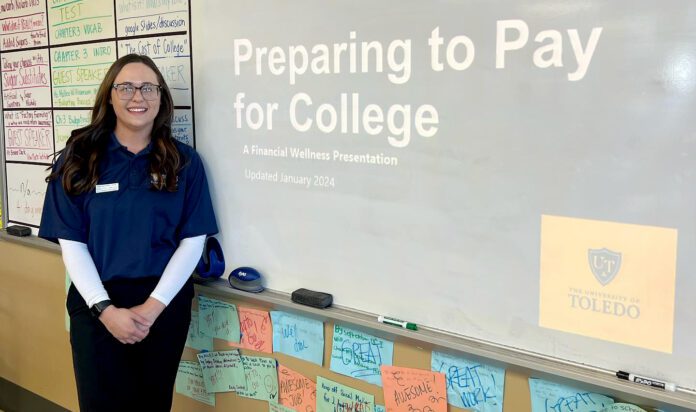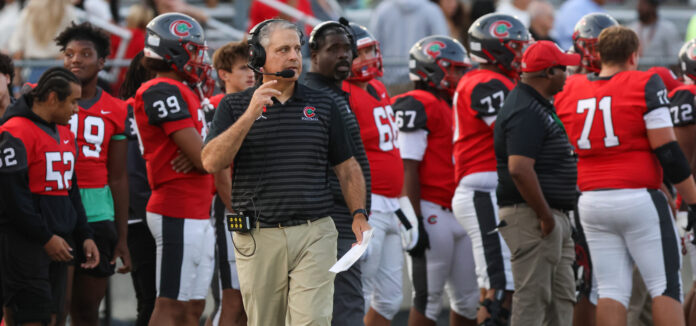Owens Corning partners with Habitat to house families
Story by Stephen Zenner | Photos by Lori King
TOLEDO – Clutching a house key and a Bible, Carla Savage took a moment to thank her family and supporters for helping her become the proud owner of a single-story house she helped build on Piddock Rd. in Toledo.

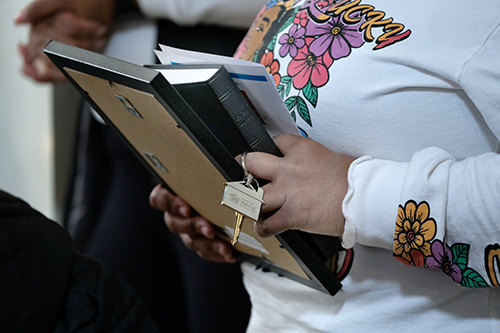

“I thank God for this because without him none of this would be possible in my life. I got to recognize that,” Savage said during her home dedication ceremony on Dec. 6. “I’m just so grateful for all of you for helping me make my dream come true of being a homeowner and for generational wealth for my family.
“I’m proud of myself that I actually did it. There were some days I was ready to throw in the towel,” she admitted as she as she continuously wiped away tears.
The home officially became hers just hours before the ceremony, when she signed paperwork to seal the deal with Habitat for Humanity’s Homeownership Program. The program, in partnership with Owens Corning for more than 20 years, provides a zero-interest mortgage loan to families in need of decent and affordable housing.
Through this partnership, Owens Corning has replaced more than
375 roofs in Lucas County and built 21 homes with MVHFH. Owens
Corning also helps provide shelter around the world through their support
of Habitat for Humanity International.


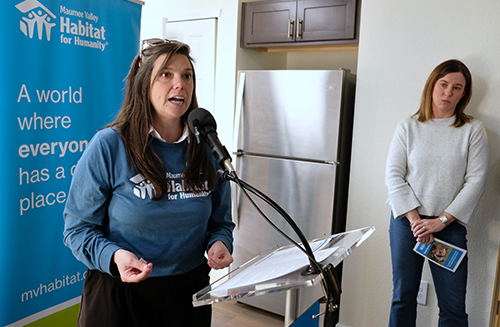

Erin McPartland kicked off the ceremony by saying she was excited to celebrate Savage’s homeownership journey with her. “Isn’t this a beautiful home? These are just beautiful homes we’re building, and for you Carla, it’s right in time for the holidays, so we’re so excited for this.”
McPartland, executive director of Maumee Valley Habitat for Humanity (MVHFH), noted that Savage’s build was special because it was the 21st build in partnership with Owens Corning. “Our mission states that we seek to put God’s love into action by bringing people together to build homes, communities and hope. Owens Corning exemplifies our mission.”
McPartland explained that every year Owens Corning partners with Habitat to help build and preserve homes in the community. She said the impact Owens Corning has on their mission is immeasurable – between the financial and in-kind contributions, and all the employee hours and volunteer engagement they give us. “Your impact can be felt across so many different families, so thank you Owens Corning for all you do. You are God’s love in action.
“And so, while this dedication is a time to love on our donors, Owens Corning and all of our volunteers and staff, it’s also a time to really love on Carla and talk about all the work you put into getting to this point, so, here to do that is Emily,” McPartland said before trading places behind the podium with Emily Buller, program director for MVHFH.
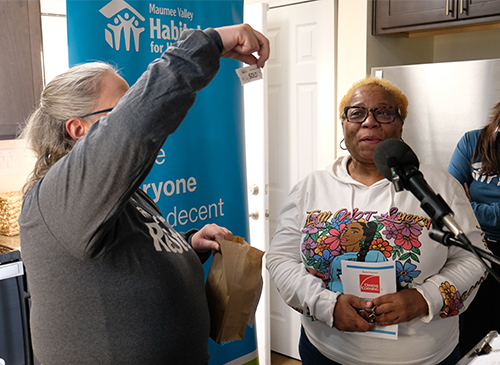

“Alright Carla, so you have been in the program for 26 months. You completed 301 sweat equity hours and attended 18 classes, which talked about home maintenance, financial wellness and lots of other topics about homeownership, so you did awesome,” Buller said to Savage.
“I know there have been times that have been hard during this program, but through it you never gave up,” she continued. “Life hasn’t always been easy for you, but you have a lot of faith, and you pray a lot, and that has gotten you through a ton. I know that home ownership has always been a goal for you, but now, with Samantha, you really wanted to provide that stability for her and a place where she could call home even when she is an adult; she can come home to this place, always.”
During the program Savage was presented with a Bible from her father, Harvey Savage, Jr., who blessed the space, and home-warming gifts from Needle Arts Guild and ReStore.


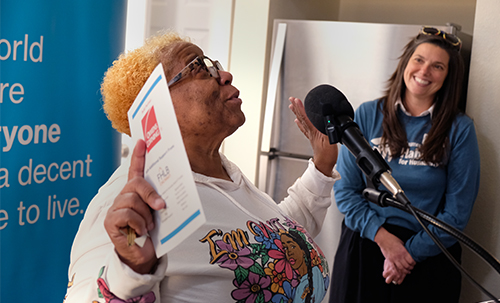

“Today’s the day to take a minute, take a deep breath, and celebrate that because you have done the work you have put in the time, and because of that we’re standing in your home,” said Lauren Clarke, strategic marketing leader with Owens Corning and a board member with Maumee Valley Habitat for Humanity.
With those words, Clarke handed Savage her new house key.
“I’m so just grateful it’s over … Jesus, now I gotta move and that’s gonna take about a week or two,” Savage said to laughter. “I’ll start tomorrow but I ain’t gonna be done tomorrow. I know it’s gonna take me at least a week, but I’m grateful and I thank God and I thank all of you. Thank you. Thank you.”









